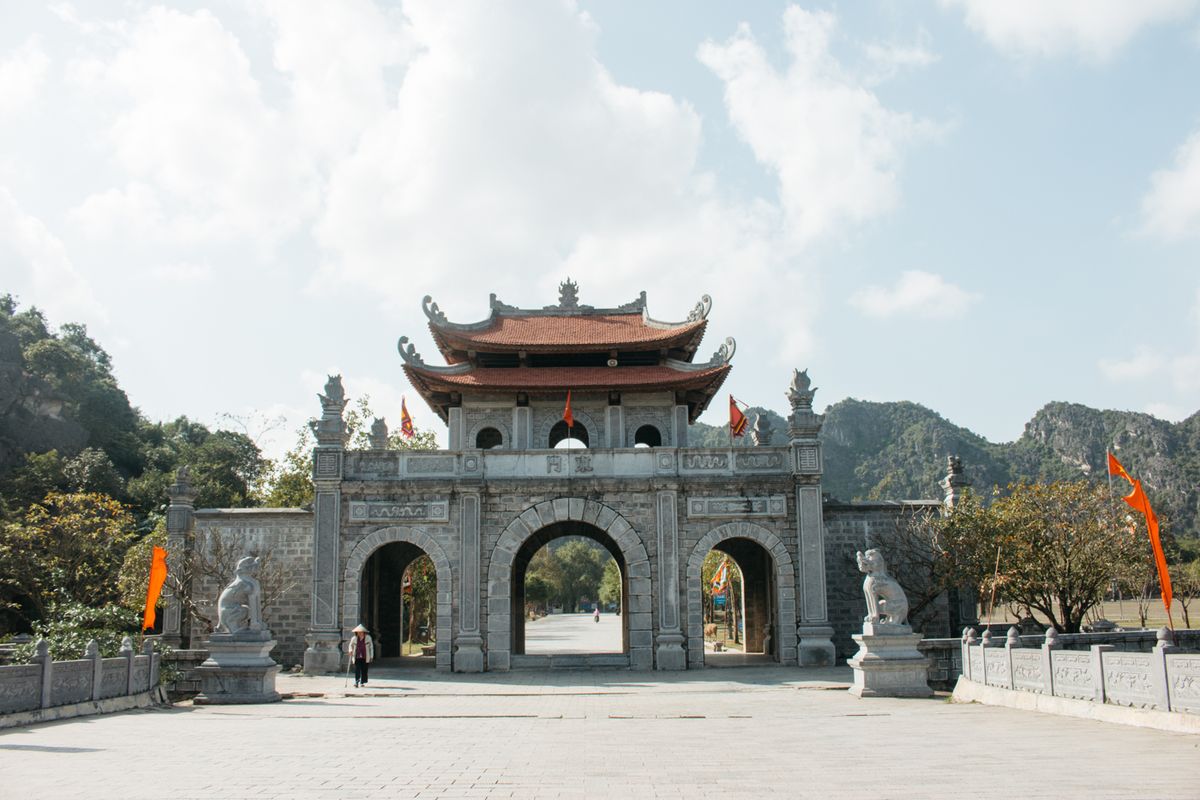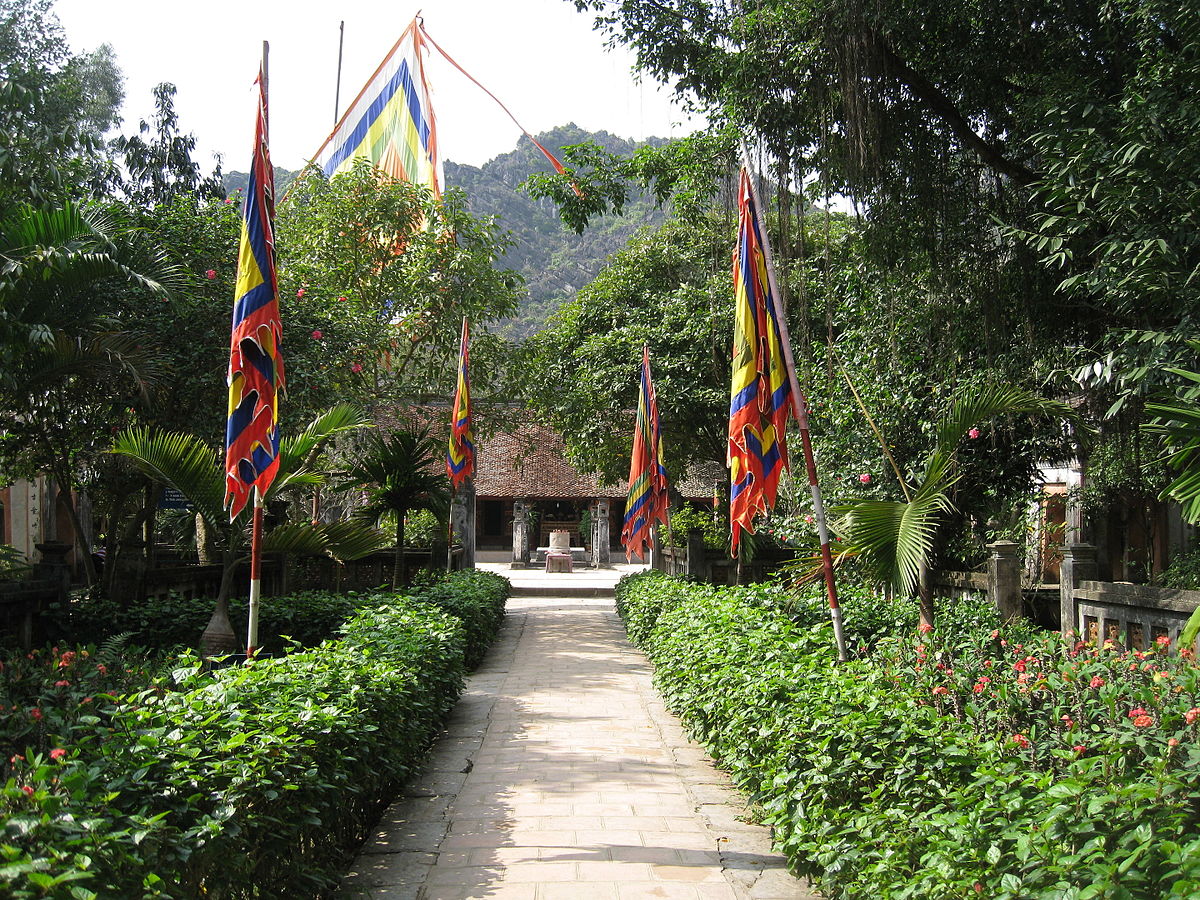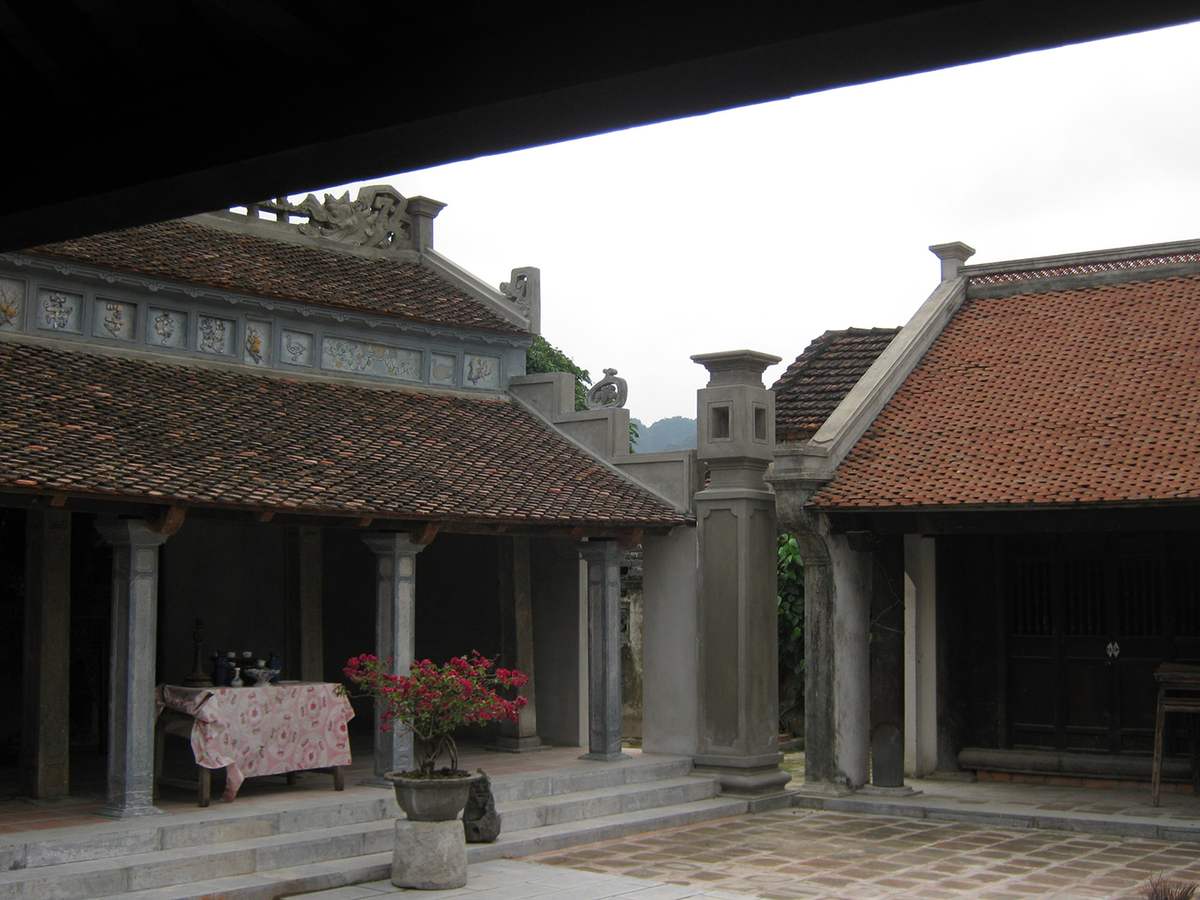As one of the four core pools of Trang An Scenic Landscape Complex, Hoa Lu Ancient Capital is a destination rich in national cultural and historical values. Despite the passage of time, the ancient capital still lies there peacefully, although quiet but still full of majesty, a golden mark marking a heroic nation. So what exactly is there in the ancient capital that everyone desires to visit once? Let’s find out with MYTOUR.ASIA
1 There is Hoa Lu capital – a cultural heritage recognized by UNESCO in the heart of Ninh Binh
Address: Truong Yen commune, Hoa Lu district, Ninh Binh province
Possessing an impressive spacious area of up to 300 hectares with architectural works of high cultural and historical value and charming landscapes, Hoa Lu Ancient Capital is one of four core areas of the famous complex. Trang An Victory , officially recognized by UNESCO as the first and only dual cultural heritage in Southeast Asia in 2014. The ancient capital is also one of the most popular tourist attractions in Ninh Binh today. now.

Impressive panoramic view of Hoa Lu ancient capital seen from above
2 By what means of transportation can you visit the ancient capital of Hoa Lu?
Located on the border between Hoa Lu and Gia Vien districts and Ninh Binh city. If you intend to visit the Ancient Capital, you can travel by bus, plane, or train.
3 Go back in time and learn about the 42 years of history in the ancient capital of Hoa Lu
Hoa Lu ancient capital was the first imperial capital of our country, existing for 42 years. This land is the place that witnessed the heroic career of building and defending the country during 12 years of the Dinh Dynasty (968 – 980), 29 years of the Early Le Dynasty (980 – 1009) and the beginning of the Ly Dynasty (1009 – 1010).
With rolling mountainous terrain surrounding the capital’s perimeter like a solid screen, along with the meandering Hoang Long river and Nho Quan and Gia Vien fields with deep moats, Hoa Lu is a land of high value for military side. It was in this land that in 968, Dinh Bo Linh quelled the rebellion of 12 warlords, became emperor, founded the majestic Dai Co Viet kingdom, and Hoa Lu became the political center and the first imperial capital. of our country.
During the reign of King Ly Thai To, he made the decision to move to the historical capital, and Thang Long Imperial Citadel was the place chosen when he realized that the capital Hoa Lu was narrow, difficult to expand and unsuitable for his position. the country at that time.
This historic decision ended the days when Hoa Lu was the ancient capital of our country. However, the royal system and facilities of Thang Long Imperial Citadel at that time were all inherited from the previous capital of Hoa Lu. Although the kings later did not live here anymore, the ancient capital of Hoa Lu continued to build solid architectural works with temples, pagodas, and temples and are preserved until today.

The ancient capital of Hoa Lu today still retains the majesty of a magnificent imperial capital
The imperial capital with majestic walls, gates, temples, palaces, and pagodas
Peaceful scenery in the Ancient Capital with endless mountain scenery surrounding it
4 Hoa Lu ancient capital – A mark of a golden age of the nation
If you have the opportunity to return to the ancient capital on your journey to explore Ninh Binh , you will definitely be surprised by the quiet, nostalgic scenery and subtle aftertaste of time here. But somewhere in the ramparts and walls, you will still recognize the majesty and majesty of a magnificent imperial capital in the past.
With an impressively spacious area of more than 300 hectares, Hoa Lu Ancient Capital is a relic complex with architectural works of city walls, caves, temples, tombs and other works of historical and cultural value. high chemistry. The ancient capital is divided into 3 areas, including: special protection zone, buffer zone and related relics.
The special protection zone includes the entire area inside Hoa Lu citadel, with relics that still exist today such as King Le Dai Hanh temple, King Dinh Tien Hoang temple, Princess Phat Kim temple, Nhat pagoda. Pillars, Vuon Thien palace, Kim Ngan pagoda, Cau Den stele, Co Am pagoda, Cho palace, Bim cave, Duyen Ninh pagoda, Sao Khe river and city walls, underground palace foundation.
Meanwhile, the buffer zone of Hoa Lu ancient capital includes the landscape area on both sides of Sao Khe stream, Trang An scenic complex with a system of pagodas and Am Tien Cave, Yen Trach communal house, Muoi cave, Quan cave, and Hoa Lu cave. Sinh Duoc cave, Luon cave, Dia Linh cave, Ba Giot cave, Nau Ruou cave, Ba Ngo pagoda, Tran temple, Khong palace, Dong palace, Lien Hoa cave, Boi cave, etc.
Related relics in the Hoa Lu ancient capital complex played an important role during the Dinh dynasty, including the ancient Bai Dinh pagoda system , South gate, Dong gate, Hoa Lu cave, Thien Ton cave, Dinh Bo Linh temple. along with other relics worshiping King Dinh in Ninh Binh province.

Nhat Tru Pagoda in the ancient capital of Hoa Lu
Buddhist scripture column over a thousand years old in the ancient capital of Hoa Lu
Thien Vuon Palace with peaceful and quiet scenery
Sacred Tran Temple in the ancient capital
The expression is quiet, with a hint of the aftertaste of time in Phu Khong
The temple worshiping Cao Son god is located peacefully next to an empty river
The magnificent Bai Dinh Pagoda in the ancient capital of Hoa Lu
5 Typical architectural works in Hoa Lu ancient capital
5.1 Explore the ruins of King Dinh Tien Hoang’s temple in Hoa Lu ancient capital
Spanning over 1,000 years of history, important relics in the ancient capital of Hoa Lu are still preserved and preserved until today. The most prominent are the temples of King Dinh Tien Hoang and the temple of King Le Dai Hanh.
Located in Truong Yen commune – which was the center of the Eastern citadel of the ancient capital in the past – King Dinh Tien Hoang temple is located in an extremely ideal position: in front is Ma Yen mountain, where the majestic King Dinh’s tomb lies to watch. Look at the beauty of the river. The temple was built during the Ly Dynasty in the style of ‘domestic work, foreign work’, simulating the shape of the ancient capital’s architecture, then rebuilt under the Later Le Dynasty.
As one of our country’s unique architectural works built in the 17th century, King Dinh Tien Hoang Temple is a complex that includes majestic works such as the Ngo Mon Gate, fake mountain, lotus pond, flower garden, The outer ritual gate, the inner ritual gate and three worship halls, Thien Huong and the harem. In the back, the Hau placed a statue of King Dinh and his sons. Today, at the king’s temple, there are still precious antiques such as a pair of flanking elephants and a pair of dragon and stone treasures placed in the Dragon Yard, carved entirely from monolithic green stone with sharp lines. exquisitely carved.
Not only that, King Dinh temple is also decorated with many shapes and intricately carved motifs on wooden and stone pillars with images of dragons, clouds, fairies, flowers, etc. These are the clearest evidence of all. shows the talent and ingenuity of artisans of the 17th century.

The main road leading to King Dinh temple 
The front gate of King Dinh’s temple still has an intact roof with intricately carved details
The main hall where King Dinh Tien Hoang is worshiped
The stone sifting dragon is displayed at the temple
5.2 King Le’s temple
Located about 500m from King Dinh temple is King Le Dai Hanh temple with a smaller scale. The temple was built with three buildings including Bai Duong and Thien Huong to worship Pham Cu Luong – the person who helped Le Hoan ascend to the throne in the past. In the main area of the palace is the place to worship King Le Dai Hanh, on the left is Le Ngoa Trieu, son of King Le, on the right is the worship of Queen Duong Van Nga. In front of the temple is the central square of Hoa Lu ancient capital, behind the temple is the moat that protected the ancient capital running around the foot of Dia mountain.
Today, at King Le’s temple, there are still traces of ancient architecture with elaborate carvings and sculptures and even traces of the old palace foundation with ancient ceramics. These precious artifacts are still stored in the museum room on the left side of the temple.
 King Le’s temple has a smaller area, giving it a more intimate feeling
King Le’s temple has a smaller area, giving it a more intimate feeling Peaceful scenery on the trail leading to King Le’s temple
Peaceful scenery on the trail leading to King Le’s temple The statue of King Le is solemnly placed in the altar room
The statue of King Le is solemnly placed in the altar room
5.3 Princess Phat Kim Temple
Located next to King Le Dai Hanh temple and Nhat Tru pagoda is the temple worshiping Princess Phat Kim, daughter of King Dinh Tien Hoang. The temple is a place where people built to honor a gentle woman who endured many storms of the 10th century.
 A peaceful corner at the temple of Princess Phat Kim, daughter of King Dinh Tien Hoang
A peaceful corner at the temple of Princess Phat Kim, daughter of King Dinh Tien Hoang The main hall is where Phat Kim is worshiped
The main hall is where Phat Kim is worshiped
Not only was the first imperial capital of our country in the past, the ancient capital of Hoa Lu today still has architectural works of great cultural and historical significance, expressing a time when the nation was majestic. If you have the opportunity to return to Ninh Binh, don’t miss the opportunity to visit the ancient capital.